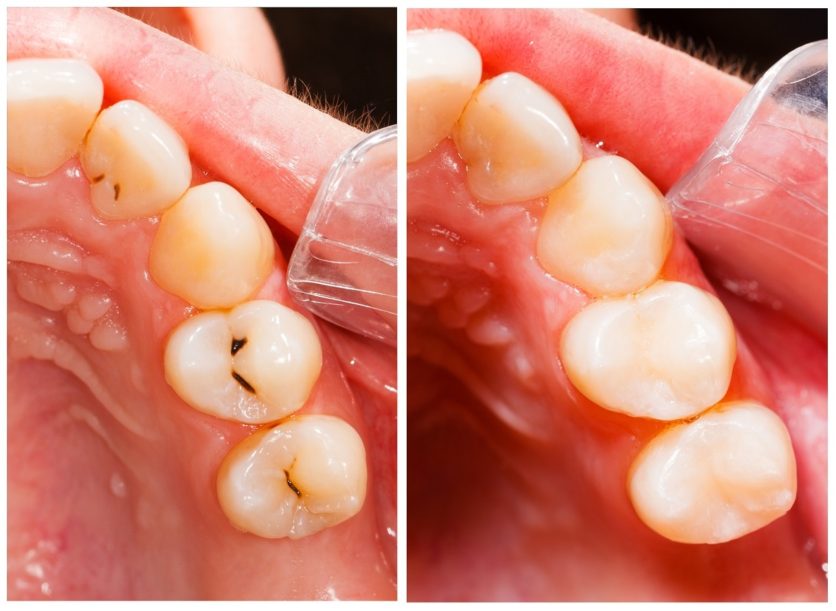
Glass Ionomer Fillings: Enhance Your Smile with Strong and Aesthetically Pleasing Restorations
When restoring a damaged tooth caused by injury or decay, our dental clinic carefully considers three crucial factors: the type of tooth, the extent of the injury or decay, and the benefits and drawbacks of different dental restorative procedures. Among these procedures, Glass Ionomer fillings or Glass-Resin fillings are considered a simpler option for minimal tooth damage. However, for extensive damage, we offer other restorative options such as inlays, onlays, and crowns.
Discover the Strengths of Glass Ionomer Fillings
As experts in dental care, we present a variety of options for dental fillings, each with unique advantages. One such option is the highly effective Glass Ionomer filling. Made from a blend of fluoroaluminosilicate, minute glass particles, acrylic, and a setting agent, these cream-colored fillings seamlessly blend with the natural color of your teeth, preserving the aesthetics of your smile while restoring tooth structure, function, and comfort.
The Unique Benefits of Glass Ionomer Fillings
Glass Resin fillings possess exceptional qualities that set them apart from other fillings. They can chemically bond with your teeth, significantly reducing the risk of further injury or decay. Additionally, they release fluoride onto the tooth, providing extra protection against harmful oral bacteria.
While Glass-Resin Fillings offer notable advantages, it is essential to note that they may not be as strong as composite resin fillings. Therefore, we typically do not recommend them for areas of the mouth subject to high pressure or intense wear. Moreover, although they closely match natural tooth color, they may be minimally detectable when placed at the front of the mouth. For increased strength, we may use resin-modified glass ionomers, which require layer-by-layer application and curing with a specialized dental light, resulting in a longer appointment but a stronger filling.
The Process of Receiving Glass Ionomer Fillings
When you choose glass ionomer fillings, our skilled dentists follow a meticulous process to ensure optimal results. This process includes:
- Cleaning and drying the tooth.
- Isolating the tooth and applying a bonding solution for better adhesion.
- Washing and drying the bonding solution.
- Placing the glass ionomer filling into the cavity space.
- Applying a polish to the filling, giving it a smooth and natural finish.
Longevity and Care for Glass Ionomer Fillings
With proper care, glass ionomer fillings can last approximately five years or even longer. To maintain their longevity, we recommend:
- Practicing good oral hygiene habits.
- Following a healthy diet.
- Brushing your teeth twice a day.
- Flossing daily.
- Scheduling regular dental check-ups every six months.
Remember, if you notice any concerns regarding your oral health, don’t hesitate to reach out to our experienced dental team.
Choose Glass Ionomer Fillings for a Safe and Beautiful Smile
Glass ionomer fillings provide an excellent alternative for patients concerned about potential reactions to other filling materials, as they do not contain any harmful substances. However, please note that we do not recommend their use on the biting surfaces of back teeth. Instead, they are ideal for front teeth, areas around the tooth necks, and tooth roots. Dentists commonly use Glass Resin fillings for baby teeth when necessary and appropriate.
At our dental clinic, we prioritize your oral health and satisfaction. Experience the benefits of Glass-Resin Fillings and trust our expert team to deliver exceptional dental care. Contact Dentist in Bowie.
Get Filling Brochure Now
Properly restoring a tooth that has been damaged by injury or decay requires the dentist consider:
- The type of tooth,
- The extent of the injury or decay, and
- The benefits and drawbacks of different types of available dental restorative procedures.
Fillings are considered as “simpler” dental restorative procedures and used when the damage to the tooth is minimal. Examples of dental restorative procedures used when the damage to a tooth is extensive are:
- Inlays,
- Onlays and,
- Crowns.
That said, there are several different options for dental fillings, and they each have different strengths. One such option is the G12lass Ionomer filling.
What to Know About Glass Ionomer Fillings
Glass ionomer fillings are made from a combination of fluoroaluminosilicate, or minute glass particles, acrylic and a setting agent. They are cream colored, and so like composite fillings are better able to blend with the color of one’s natural teeth. This can be an important point for many patients, because while they definitely desire to restore tooth structure, function and comfort they yet want to preserve the aesthetics of a beautiful mouth while doing so.
One thing that makes glass ionomer fillings truly unique is that they can form a chemical bond with teeth, reducing or even eliminating the chance of further injury or decay. They also release fluoride onto the tooth, further helping to protect the health of that tooth and guard against the harmful oral bacteria that seeks to attack the tooth.
Though there are some benefits to glass ionomer fillings, the truth is that they are not always as strong as composite resin fillings, and so are not as highly recommended in locations where high pressure or intense wear is more likely to occur. Glass ionomer fillings are also not quite as good at matching natural tooth color as composite resin fillings, so when placed at the very front of the mouth they may be minimally detectable. Resin-modified glass ionomers can be stronger, but these fillings also need to be placed in thin layers, each layer requiring curing (hardening) with a special dental light before the next layer can be applied. This results in a longer appointment, but a stronger filling.
Receiving Glass Ionomer Fillings
When placing a glass ionomer filling, your dentist will:
- Clean and dry the tooth,
- Isolate the tooth and place a solution on the tooth to aid in the bonding process,
- Wash and dry the bonding solution,
- Place the glass ionomer filling into the cavity space,
- Apply a polish to the filling.
When well cared for, a glass ionomer filling may last for approximately five years or sometimes even longer. Proper care includes:
- Adhering to good oral hygiene habits,
- Maintaining a healthy diet,
- Brushing twice a day,
- Flossing once a day and
- Visiting the dentist every six months.
- It also includes speaking with your dentist whenever you notice that something seems amiss with your oral health.
Some Final Thoughts
Glass ionomer fillings can be a good alternative for patients who are concerned about reacting to the substances contained in other types of fillings, as they do not contain any substances that are considered harmful in any quantity. That said, they are not recommended for use on the biting surfaces of back teeth but rather for front teeth, around the necks of the teeth and in the roots of teeth. They are also commonly used for fillings in baby teeth, where fillings are determined to be necessary and prudent.
For more information about glass ionomer fillings and whether they are right for you, Contact your Dentist in Bowie.
